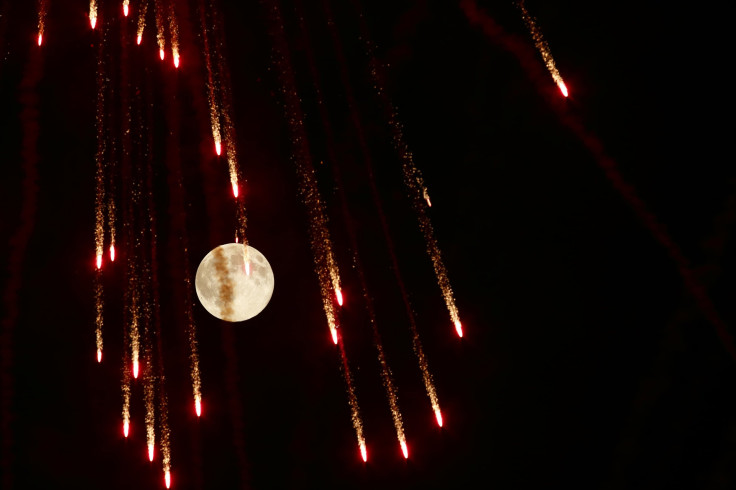Supermoon 2014: September Harvest Moon Caps Off Summer Full Moon Trilogy

The final "supermoon" of 2014 will rise on Monday and wraps up the summer trilogy of full moons that began in July. The September full moon, in addition to being a supermoon, is also known as the Harvest Moon.
A Harvest Moon is the full moon closest to the equinox, when the sun crosses the celestial equator, which takes place this year on Sept. 23. For the Northern Hemisphere, the autumnal equinox marks the beginning of fall, with shorter days and longer nights. The Southern Hemisphere experiences a vernal equinox, marking the beginning of spring and longer days.
The September supermoon is the last of 2014, and skywatchers can get a good look at the full moon, as it appears slightly larger and brighter, on Monday. The illusion is due to the moon's elliptical orbit as it reaches its closest distance to Earth, known as perigee. The August supermoon was considered the best of the summer trilogy as the moon turned full within the hour it reached perigee whereas the July and September full moons occurred on the same day as perigee.
For the September supermoon, Slooh, the international organization of observatories and astronomers, will track the full moon from the Canary Islands in Spain. "Whether we call this a super Harvest Moon or a Harvest supermoon, and whether we fuss over the fact that lunar perigee happened just one night before this moon was full, there's no denying that it's the Harvest Moon. This is the year's most famous full moon, and one of only two that even have a name. Yet it's bathed in myth and misconception even without all the extra 'supermoon' business. It will be fun to explore the true secrets of the Harvest Moon while watching it live," Slooh astronomer Bob Berman said in a statement.
The Slooh broadcast of the supermoon will include a discussion on the myths and history of the Harvest Moon. As noted by the Old Farmers Almanac, the full moon gets its name as it helps farmers harvest crops. The moon can rise, on average, 50 minutes later each night, but the Harvest Moon rises earlier with less lag, reports Space.com.
The first full moon supermoon of 2015 takes place on Aug. 29 at 18:35 Coordinated Universal Time, reports EarthSky.
The supermoon live stream, courtesy of Slooh, can be viewed below, beginning at 9:30 p.m. EDT.
© Copyright IBTimes 2024. All rights reserved.






















